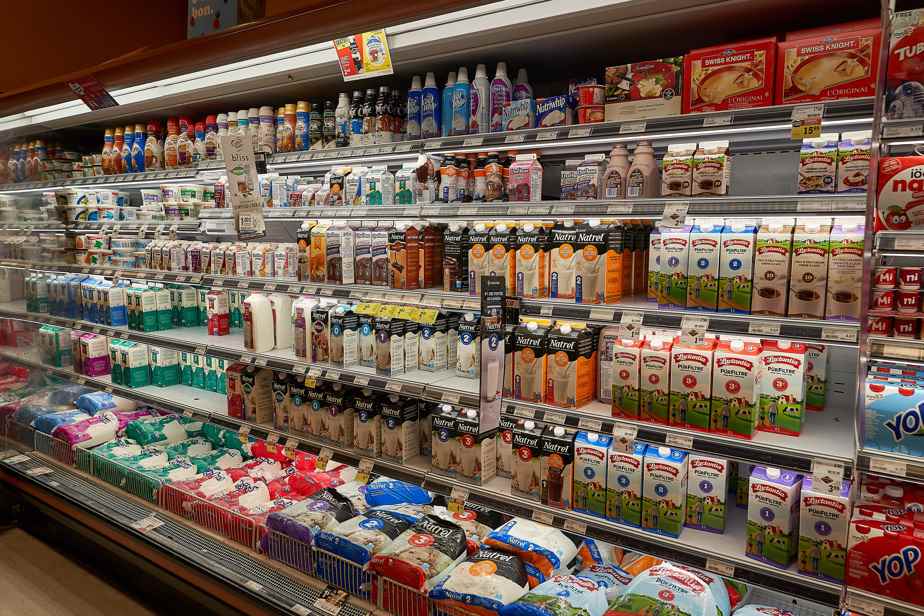While the grocery bill is getting heavier, without consumers always being able to know the reasons, the Canadian Dairy Commission (CCL) could show more transparency to justify the price increases to which it agrees, argue actors Of the industry.
Posted at 6:00 a.m.
The Federal Minister of Agriculture, Marie-Claude Bibeau, even saw fit to issue a call to order to this effect to the Commission. “I ask you to provide the necessary leadership so that the CDC, in keeping with its mandate, responds to the following priorities: to review the CDC’s decision-making process regarding milk pricing and to ensure clearer and more transparent communication with Canadian consumers and other stakeholders in the dairy sector,” she wrote in June, in a mandate letter sent to CDC President Jennifer Hayes.
The government body, which regulates the price of milk on the farm, last week recommended an increase of 2 cents per litre, or 2.5%, from 1er september. This is the second increase this year. The CDC had also given its approval at the beginning of the year to an increase of 8.4%. This came into force on 1er february. At the other end of the chain, the price of milk displayed in supermarket refrigerators is determined in Quebec by the Régie des Marchés Agricoles. Hearings on this subject will be held in July. The cost of dairy products such as yogurt, however, is not regulated and is determined by negotiation between retailers and processors.
If he does not question the work of the Commission, Pascal Thériault, agronomist and economist at McGill University, believes that efforts must be made to better explain the decisions taken.
Yes, producers need more money. Everything costs more. There is no reason to think that producers are spared from this. But there is a way to pass messages, and the CDC doesn’t have it.
Pascal Thériault, agronomist and economist at McGill University
“If we draw a parallel, in Quebec, we have the Financière agricole which takes care of crop insurance, farm income stabilization insurance, it’s easy [avec elle] to see the statistics, the calculation methods. »
He deplores the fact that the CDC does not do the same. “We have a 2.5% increase which, I think, is justified. But it comes after an increase of 8.4% and the consumer already feels taken by the throat. I think that we would solve a lot of problems if, in a clear and limpid way, we said: here is what it costs producers to produce a hectolitre of milk. The consumer wants to know. »
Not easy to find
According to Luc Boivin, director of the Boivin cheese factory in Saguenay–Lac-Saint-Jean, Minister Bibeau’s reprimand “perhaps” changed things, even if he believes that the way the CDC explains its decisions can still be improved.
“We have 34 classes of milk,” he explains. A lot of processors don’t even understand how it works, imagine the consumers. Should the system be simplified to make it more understandable? These are questions that we will have to ask ourselves. »
On the side of the Council of Dairy Industrialists of Quebec (CILQ), the president and director general, Charles Langlois, maintains for his part that the CCL “is doing everything possible”. “If it made it to the papers and explained all the fine details of the calculations, I’m not sure consumers would find it. She tries to find a more educational way. But it’s not always easy. »
“It remains a very open process,” adds Mr. Langlois. This year when [la CCL] had a request for a raise from the producers, she notified everyone. »
When we have an increase in the price of vegetables, we don’t have the fine details. Milk is no different. The only difference is that with milk, you have a floor price that provides income to producers.
Charles Langlois, CEO of the Quebec Dairy Industrial Council
Mr. Langlois also points out that if consumers want to know if the increase granted will have an effect on the price of their pot of yogurt or their package of cheese, these explanations do not come under the CDC. It has no authority over the price of fluid milk sold at retail, he insists.
For its part, the Commission ensures that it recognizes and respects “the public interest”. “Even before the publication of the mandate letter, we had begun to adapt our communications to meet the expectations of Canadians,” wrote Chantal Paul, director of integrated services at the CDC, in an email sent to The Press. Some of these adaptations are already visible (frequently asked questions on our website, follow-up sessions with consulted stakeholders) even if the CDC had to make a decision earlier than expected. We will continue to publish price adjustments in advance to give dairy industry players time to prepare and to avoid consumer surprises when shopping for groceries. »

